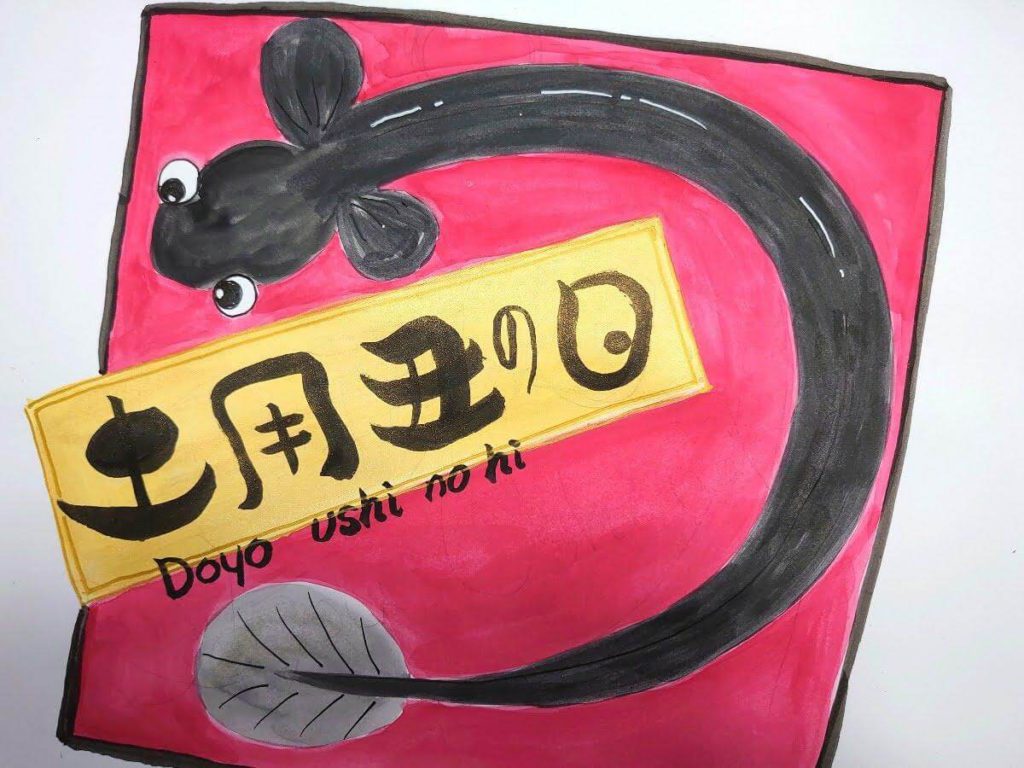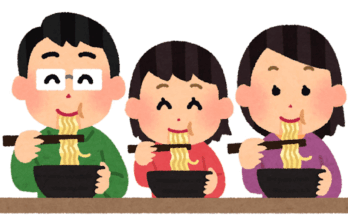Hi! I’m Rei. I’m in Tokyo. The other day, I was talking with my best friend Chisato, who lives in Osaka.
★★★★★
Rei: It’s hot and muggy, isn’t it? I’m going to melt!!
Chisato: Yeah! It’s scorching hot. How can we survive?
Rei: Hmm…we need to build up stamina by eating something…
Chisato & Rei: Unagi!! Hahaha!
Chisato: “Doyo ushi no hi” is just around the corner!
Rei: When is it this year?
Chisato: Let’s see…in 2023, it’s July 30th!
★★★★★
☆Doyo ushi no hi

Many Japanese people eat eels on “doyo ushi no hi.” What is it? And why eels?
What is “doyo?”
Doyo is a period of about 18 days before the first day of spring, summer, fall, and winter.
What is “ushi no hi?”
“Ushi” means “ox,” and “h-i”(ひ) is “day” in Japanese, so it means “the day of the ox.” Twelve animals have been used in the zodiac, and it is one of the ancient methods of indicating time and direction. The day of the ox comes every 12 days. “Doyo ushi no hi” is the day of the ox during doyo. That’s why sometimes there are two days of ox in one “doyo” depending on the year.
Why do we eat eels?
There are four “doyo”s in a year, but to be honest, most Japanese people don’t care about when doyo is. Even so, “natsu doyo,” summer doyo, is the time for many people to realize that doyo is here because we see many advertisements selling eels here and there.
Why did it happen? Let’s unveil the history!
Since ancient times, Japanese people have tried to eat something good for their health to get over the scorching summer and have had a custom of eating something having the letter “u” (う) as an initial during summer doyo. Why “u”? “U” is the first letter of “ushi no hi,” the day of the ox! For example, udon noodles, umeboshi (pickled plums), uri (gourd), etc. Unagi (eel) is one of them. And there’s a special theory passed down about eels.

Speaking of eels, many Japanese people love to eat glaze-grilled eels called kabayaki. However, in the Edo era (1603-1867), people avoided eating stodge, heavy kabayaki during the muggy summer. One unagi shop owner tried to pick a person’s brain to sell eels even in summer. This person was Hiraga Gennai, a famous inventor. He suggested putting up a sign board saying, “Today is the day of the ox!” Many customers wondered what it was and were attracted to the shop. It is said that this is the beginning of our custom to eat eels on the day of the ox, doyo ushi no hi.

★★★★★
Chisato: Well, do you know that there are differences between eel dishes in Osaka and Tokyo?
Rei: What? What are the differences?
Chisato: There are two.
Rei: Two?
Chisato: Yes. Do you want to know? The keypoint is that Osaka was a merchant city and Tokyo was a samurai society.
Rei: Wow…so what are the differences? Tell me.
Chisato: Haha. Ok, don’t rush me. One is the different way of grilling.
★★★★★
☆How to grill

Tokyo
In Tokyo, eels are steamed before being grilled. By doing so, eels get soft, tender and look bigger. Tokyo used to be called Edo, and it is said that samurai in Edo liked to show off, so they loved the sizable-looking eels.
Also, people in Edo were called Edokko and well known as hasty people. As you can guess, steamed eels are quick to bake, and they best matched the Edokko spirit.

Osaka
In Osaka, eels are grilled without steaming. Slow grilling makes the surface of eels crispy and the inside soft and fluffy. Therefore, because eels are grilled directly from raw over charcoal, it takes time and requires the skill of craftsmen to make them tender.
It’s the baking time that matters. The merchants want to have a long business meeting, so it is perfect that the eels take a little longer to grill.

★★★★★
Rei: That’s interesting!
Chisato: Yeah.
Rei: I’m getting more and more curious about the other one. Hurry up and tell me, Chisato.
Chisato: Ok ok. The other one is in the way it opens.
★★★★★
☆How to open

Tokyo
In Tokyo, eels are slit open along the back. It is called “Sebiraki” (背開き) in Japanese. Why?
If they are slit open along the belly, it causes the flesh to fall off when they are steamed. The head is cut off at this point. Furthermore, it is said that cutting along the belly reminded samurai of committing ritual suicide by disembowelment. It is called “seppuku” (切腹), and they wanted to avoid it.
Plus, when eels are cooked, bamboo skewers, not metal skewers, are used in Tokyo. The reasons are that short bamboo skewers are easy to put into steam baskets, and they are safer to grill because they have lower heat conductivity. Besides, they don’t get burned easily because the grilling time is short in Tokyo.
Osaka
Most eels in Osaka are opened in the “belly-opening” method. It is called “Harabiraki” (腹開き). The samurai culture in Tokyo and the merchant culture in Osaka were deeply rooted, and the merchant-like term “Hara wo watte hanasu” means “to have a heart to heart talk” was favored. “Hara wo waru” means “belly-opening.” It builds a good relationship in business. It’s so Osakan, isn’t it?
And because it takes a long time for eels to grill, metal skewers are used. The skewering is literally “skewered” with the dorsal fin, tail fin, and head attached. At eel restaurants, the head is cut off, and the rest is served as the unagi dishes.
☆Tips of unagi in Osaka
There is some interesting information about eels in Osaka. Although it is something we don’t see or hear much about these days.
★★★★★
Chisato: Hey, Rei. I have something else interesting to tell you. Do you want to know about it?
Rei: Wow! You have more? I’d love to!
Chisato: OK! First one!! Do you know “Hansuke” (半助)? It is a part of eels.
Rei: ”Hansuke?” …No…
Chisato: Hansuke is the head of an eel. In Osaka, it was the custom to eat them. As I said, at a restaurant, unagi dishes are served without its head. The packs of eel heads, which consist of about 15 heads, were sold without disposing of them.
Rei: Is Hansuke a person’s name?
Chisato: Some say it’s a person’s name. Others say, at that time, one yen was called “Yensuke” (円助). One pack was sold for half of one yen, so the head of eels were called Hansuke (半助). It seems that hansuke has a lot of umami and deep taste including collagen for beauty. We can get a very good dashi from them. Famous dishes with hansuke are hansuke tofu and hansuke udon.
Rei: I see….how deep!

Chisato: The second one is that people called unagi mamushi in Osaka.
Rei: What!!?? Mamushi is a snake, a Japanese pit viper, right?
Chisato: It sounds the same but means something different. If you write it in kanji, it’s “間蒸し mamushi.” The grilled eels in Osaka are crispy, but if you put them between rice, they become softer and tender.
Rei: Phew! I got it. It’s good to hear that they’re not snakes!

★★★★★
~Message from Chisato and Rei~
Chisato: The difference between Tokyo and Osaka is really interesting. Like interesting interesting.
Rei: Yeah, it’s good to know that differences are from so many customs and backgrounds of history, even foods.
Chisato: Like the udon we talked about the other day!
Rei: Yeah, yeah, this is it!!
Kitsune (Fox)? Tanuki (Raccoon dog)? 〜Tokyo vs. Osaka~
Chisato: I’m sure there are many more things. Let’s look for them again and compare, Rei!
Rei: Of course!
Did you enjoy it? Thank you for reading our article!
Chisato:Clay art artist. I am an English volunteer guide in Osaka and Nara, especially in Horyuji Temple and Kyoto. I like cooking, gardening and playing with my grandchildren. I also love to study English.
Rei: Working for an English language school. My source of energy is our students’ smiles full of curiosity. I love visiting friends in and outside of Japan.





 HTJ has a YouTube page! Check it out
HTJ has a YouTube page! Check it out
Sorry for my late comment!
I really enjoyed this article and your video!
I love the collaboration between the two of you.
Thank you for sharing about Japanese culture as always.
It was very interesting about the reason for the slit along the back in Tokyo and the “belly opening” method in Osaka!
Thanks for reading our article and watching the video!! Your comment reminds me of the fun time I shared with Chisato! The scorching hot days finally seem to settle down. Even so, let’s eat eels and stay healthy!!😉